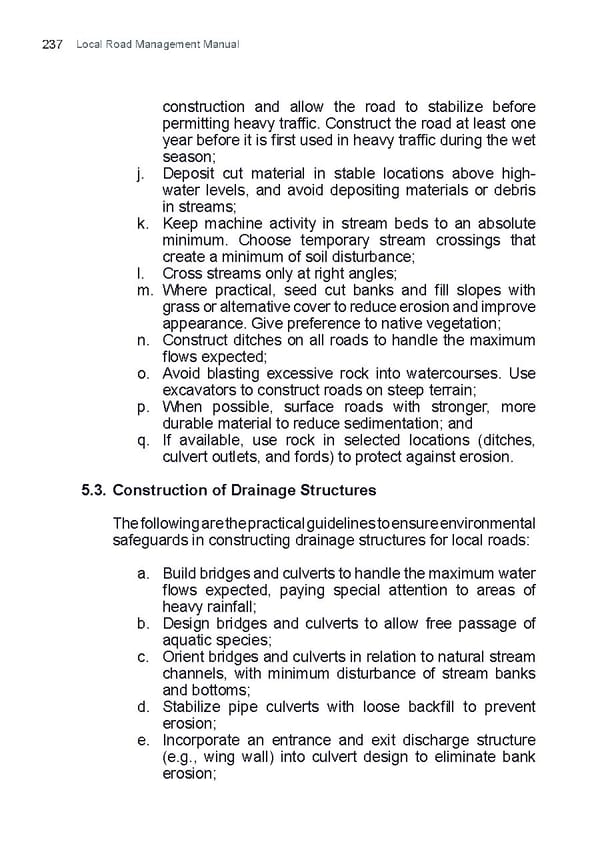Local Road Management Manual 237 construction and allow the road to stabilize before permitting heavy traiffc. Construct the road at least one year before it is ifrst used in heavy traiffc during the wet season; j. Deposit cut material in stable locations above high- water levels, and avoid depositing materials or debris in streams; k. Keep machine activity in stream beds to an absolute minimum. Choose temporary stream crossings that create a minimum of soil disturbance; l. Cross streams only at right angles; m. Where practical, seed cut banks and ifll slopes with grass or alternative cover to reduce erosion and improve appearance. Give preference to native vegetation; n. Construct ditches on all roads to handle the maximum lfows expected; o. Avoid blasting excessive rock into watercourses. Use excavators to construct roads on steep terrain; p. When possible, surface roads with stronger, more durable material to reduce sedimentation; and q. If available, use rock in selected locations (ditches, culvert outlets, and fords) to protect against erosion. 5.3. Construction of Drainage Structures The following are the practical guidelines to ensure environmental safeguards in constructing drainage structures for local roads: a. Build bridges and culverts to handle the maximum water lfows expected, paying special attention to areas of heavy rainfall; b. Design bridges and culverts to allow free passage of aquatic species; c. Orient bridges and culverts in relation to natural stream channels, with minimum disturbance of stream banks and bottoms; d. Stabilize pipe culverts with loose backifll to prevent erosion; e. Incorporate an entrance and exit discharge structure (e.g., wing wall) into culvert design to eliminate bank erosion;
 LRM Manual CMGP Page 236 Page 238
LRM Manual CMGP Page 236 Page 238